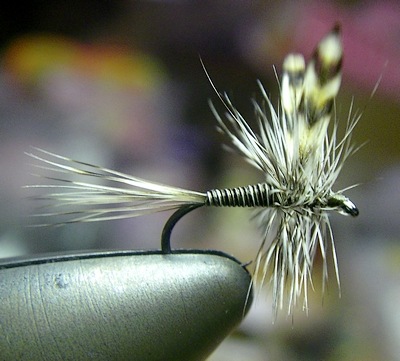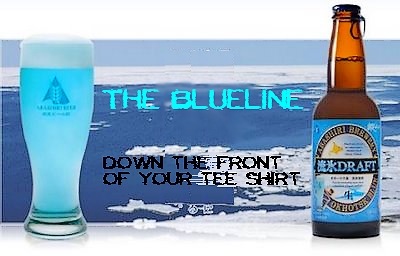When the only thing we’d mastered was the “tailing loop” and overhand knots added via false cast – long before we knew what Caddis were, or achieved something the books called “drag free” – we encountered the One Fly…
We understood dry flies because strikes were visual and obvious; feeding fish made dimples, and the stalk was crucial to our repertoire – inching closer to compensate for limited casting without scaring fish or slipping and windmilling frantically for balance.
If we had a vest most of its pockets were empty. A hastily wrapped sandwich, an extra leader and fly boxes that were pill bottles or containers the vendor supplied when we bought them. Stores were as baffling as Catholic ritual, evoking more questions than answers, and while we handled and wiggled all the things we didn’t understand, we’d eventually wind up steaming the glass of the fly display.
… neat little rows of gaily colored Catskill dry flies; Coachmen, Female Beaverkill’s, Quill Gordon’s, and the Light Cahill – and while conscious of the different sizes – only one size was apparent to our untrained eye ..
Small.
At some point we’d draw the attention of some smiling fellow with a tie, who’d seen our quandary countless times, allowing us to summon the nerve to ask, “what would you use if you were going to the …”
Even then it wasn’t simple, it was pleasant and unfettered by splashy or strident. Fly fishing was something Dad did – and while the first half dozen trips had been alternately hellishly cold, blazing hot, or full of bloodsucking wildlife – appreciation for the woods was slowly replacing fear of the unknown, yet full appreciation was still at arm’s length, wood smoke and trout were a distant second to a cheeseburger.
Many of those first lessons were painful; don’t grabass with Older Bro near the stacked rods, don’t throw rocks near Pop or near dusk, and don’t throw your metal Ace Hardware bait casting rod into the creek unless you wanted to learn how far Poppa’s swift retribution could send you … and how cold and deep it was when you got there.
But the “One Fly” was special and portent to all the hideous rituals to follow. It was the fly you caught your first fish with – emerging head and shoulders above all others, the first fly whose name you’d suddenly memorized.
That first fish was an inkling one day you might master this craft, and while your casting hadn’t improved and your Latin hadn’t progressed past “amscray” – armed with a couple dozen of “The One” and the creek and all its progeny were toast.
Success transformed us from Acolyte to Master, the One Fly begat the First Fish – which begat the First Opinion, which ushered in all those effete arcane rituals you swear by today …

Mine was the Mosquito, an instinctive choice for a young lad that doesn’t know better – only Poison Oak is more indelibly associated with the Woods, yet has no parallel in any shop’s fly selection.
A.J. McClane’s Standard Fishing Encyclopedia offered a fuzzy color plate whose hackle tip wings were swallowed by surrounding hackle, my early renditions were absent wings – just grizzly hackle and black Nymo ribbed with gray thread.
The Sierra’s and all the trout therein trembled before my tailing loop and wingless variant, and Match the Hatch meant the fly landed in water instead of snarled in overhanging Pine..
Sophistication was learning that Willow sap added a light yellow stain to the hackle. Countless hours cursing my backcast and untangling leaders and fly from same, spawned the little known Deadly Yellow Variant – the counterpunch for finicky small stream trout.
The One Fly, it was Confidence Incarnate – defying the wisdom of Matching the Hatch and every tome since.
 Irate anglers and the phalanx of ecological shock troops have a clean target to blame for the world’s declining fish stocks, climate change, and extra hammy feet in your riffle …
Irate anglers and the phalanx of ecological shock troops have a clean target to blame for the world’s declining fish stocks, climate change, and extra hammy feet in your riffle …
 I didn’t, but I was smart enough to figure that a steady diet of Baloney, Goat Cheese, and Cranberry sauce would relieve me of an onerous pre-dawn responsibility. When some really tired senior guide returned with sammitch uneaten – pointing out the prominent thumb print, I’d feign concern – then point out it looked more like a toe …
I didn’t, but I was smart enough to figure that a steady diet of Baloney, Goat Cheese, and Cranberry sauce would relieve me of an onerous pre-dawn responsibility. When some really tired senior guide returned with sammitch uneaten – pointing out the prominent thumb print, I’d feign concern – then point out it looked more like a toe … Antidepressant use doubling in a single decade
Antidepressant use doubling in a single decade I hadn’t thought about it much until I started catching Smallmouth bass with regularity. Trout and saltwater fish shared a similar resigned expression when handled; dull and lifeless – as if garnished with lemon was better than cavorting with mayflies or seaweed.
I hadn’t thought about it much until I started catching Smallmouth bass with regularity. Trout and saltwater fish shared a similar resigned expression when handled; dull and lifeless – as if garnished with lemon was better than cavorting with mayflies or seaweed.

 Tony Dungy laments he never went fishing with Michael Vick
Tony Dungy laments he never went fishing with Michael Vick